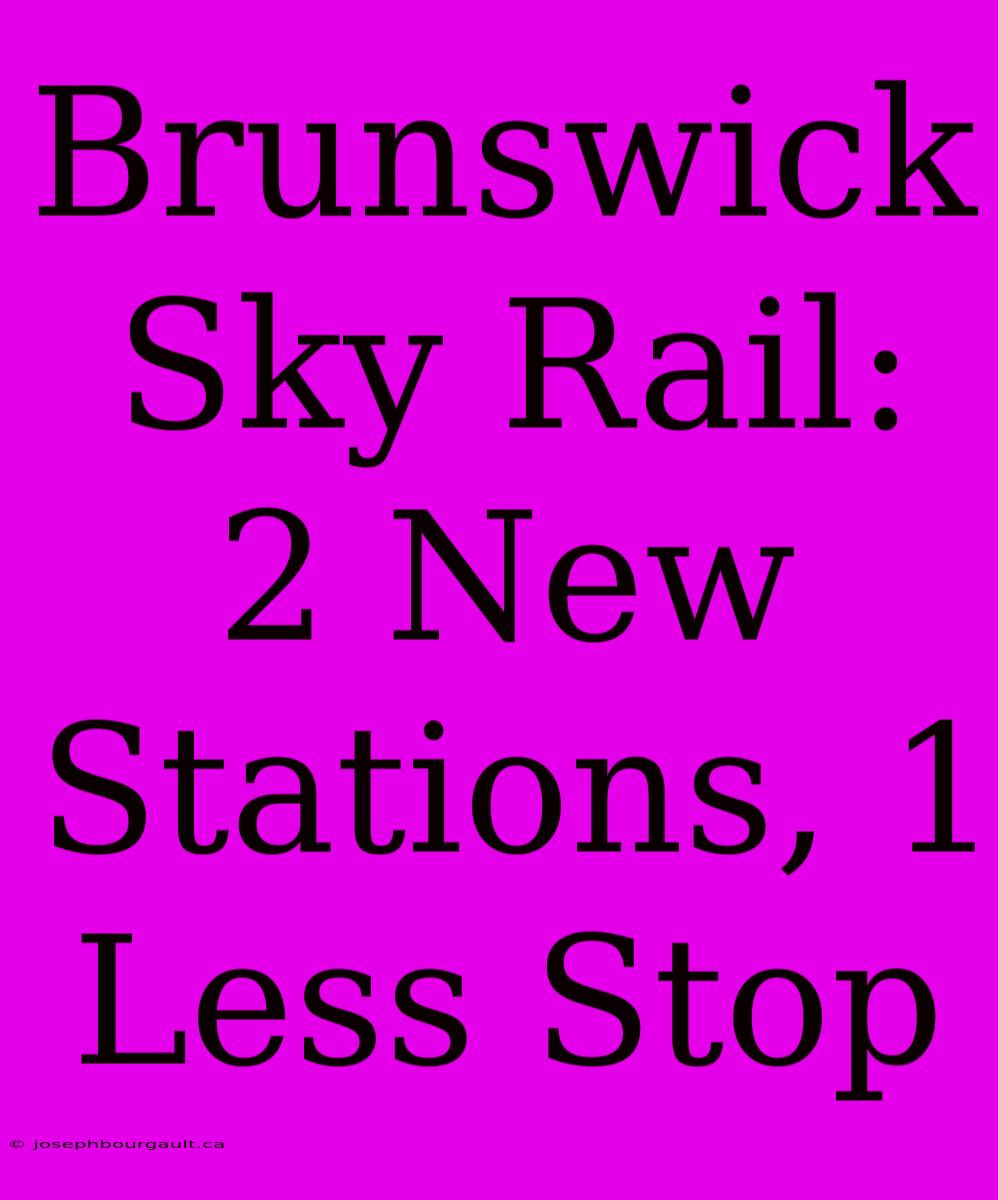Brunswick Sky Rail: 2 New Stations, 1 Less Stop – A Win For Commuters?
The Brunswick Sky Rail project, a significant infrastructure investment in Melbourne, is taking shape, promising a faster and more efficient commute for thousands of commuters. But with the latest announcement of two new stations and the removal of one existing stop, there are questions regarding the project's impact and the long-term benefits for residents.
Two New Stations – More Convenience or More Complexity?
The addition of two new stations – Moreland and Jewell – aims to improve accessibility and provide more convenient access to the Sky Rail line.
- Moreland station, located near the intersection of Sydney Road and Bell Street, will cater to the growing population in the area and offer direct access to the bustling shopping hub of Sydney Road.
- Jewell station, situated near the intersection of Jewell Street and Brunswick Road, promises improved connectivity for residents in the Jewell and Coburg North areas.
These new stations are expected to bring increased ridership and reduce congestion at existing stations, particularly during peak hours.
One Stop Less – A Faster Commute or Disrupted Journeys?
However, the project also involves the removal of the Brunswick station, which has been a key stop on the Upfield line for decades.
- This decision has sparked debate among residents and commuters, with concerns about increased travel time and potential disruptions to existing travel patterns.
While the project promises a faster commute overall, the absence of the Brunswick station could pose challenges for those who previously relied on it for access to the city and beyond.
Unveiling the Future of Brunswick Sky Rail
The Brunswick Sky Rail project is poised to transform the way people travel in Melbourne, offering a modern and efficient transportation system. The addition of two new stations and the removal of one existing stop, while attracting attention and debate, highlight the complex considerations and adjustments involved in major infrastructure projects.
The project's success hinges on effective communication, community engagement, and seamless integration with existing transport networks.
As the project progresses, it's crucial to monitor its impact on commuters and address any potential challenges to ensure a smooth and beneficial transition for the entire community.

